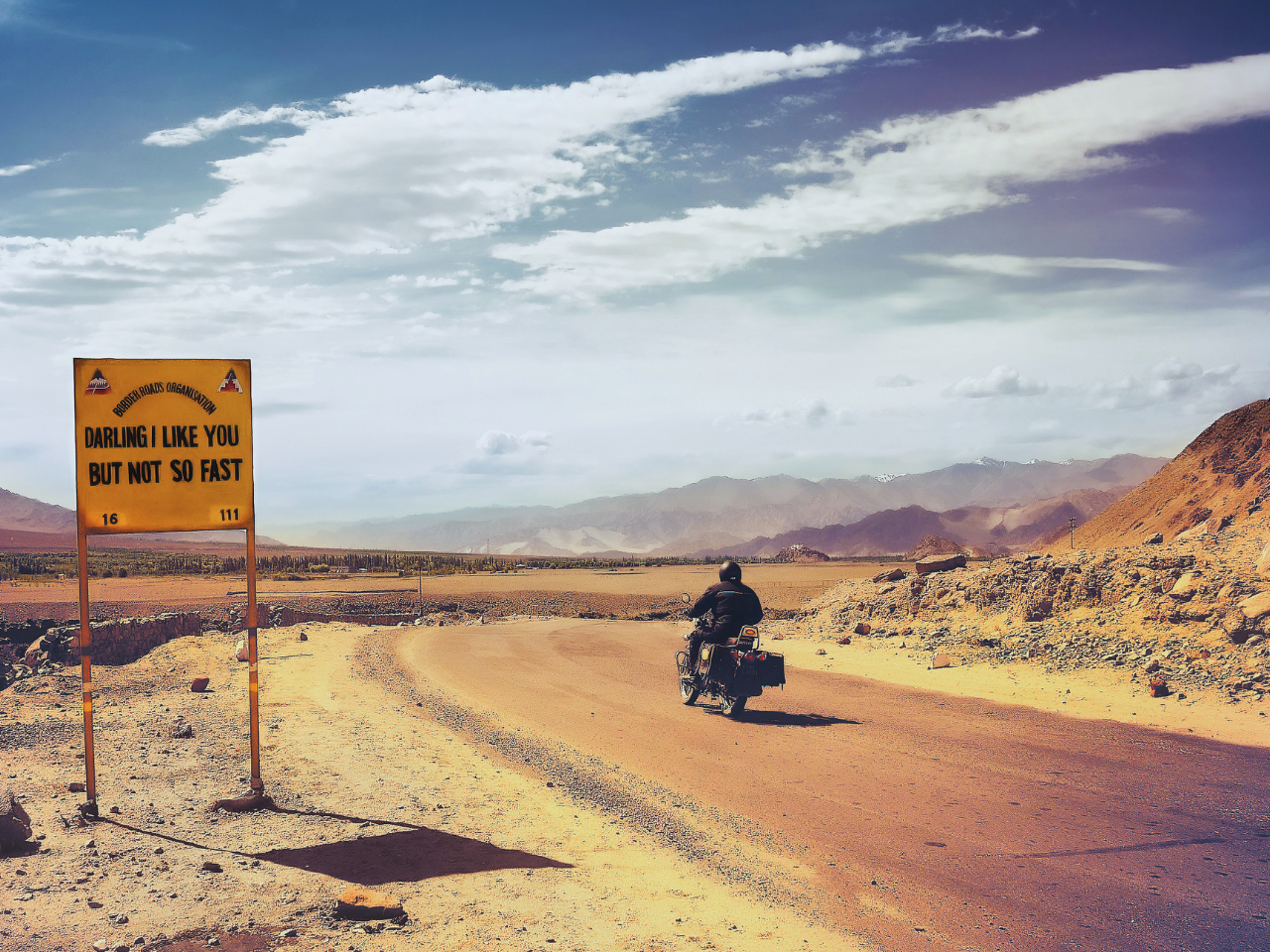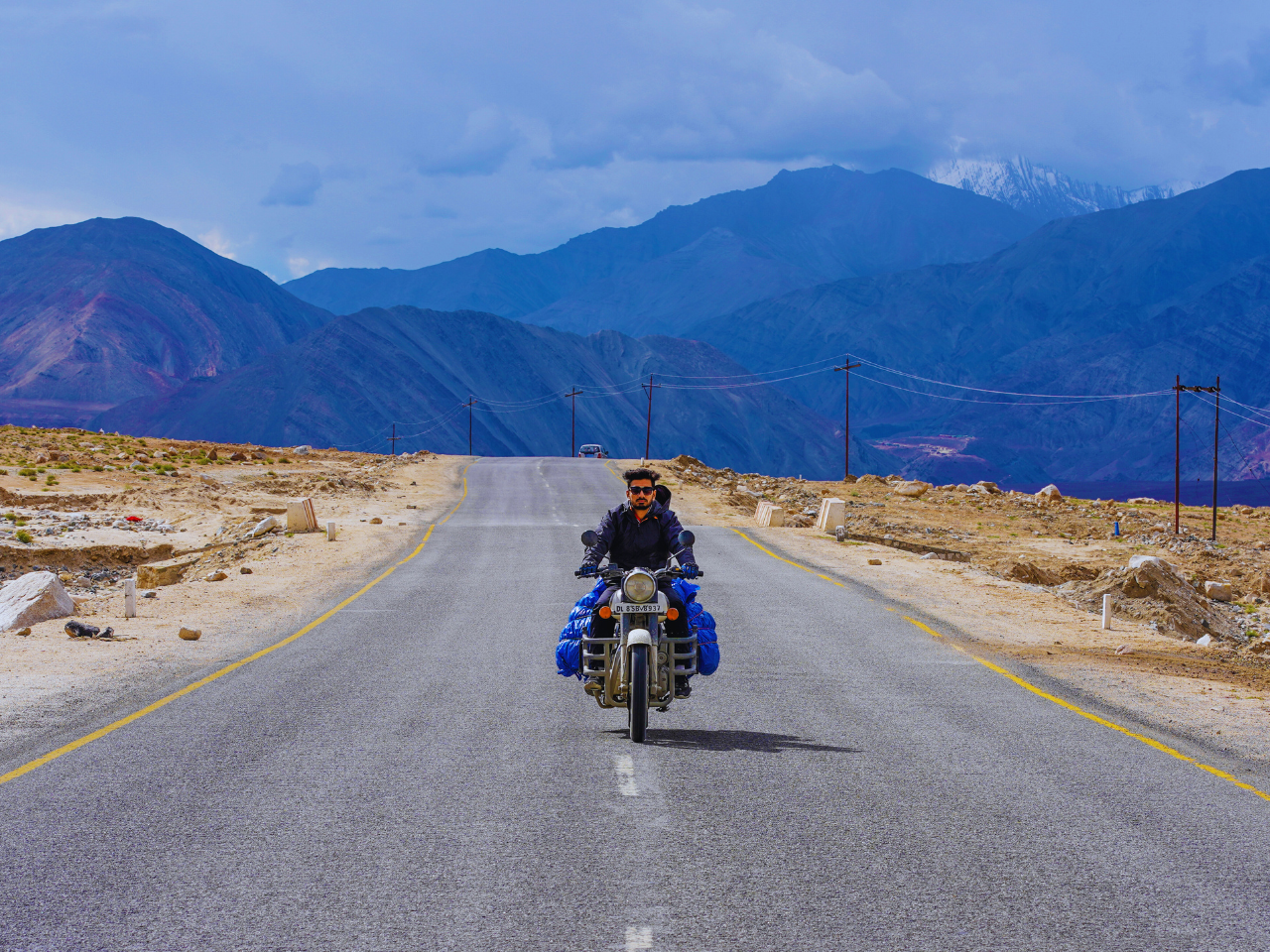Ladakh Wildlife Adventure
Ladakh’s Wildlife Tour Guide
Ladakh’s stark beauty extends far beyond its dramatic landscapes and serene monasteries. Nestled amidst the high-altitude plateaus and rugged mountains lie protected areas teeming with unique wildlife. Here’s a closer look at eight of the prominent wildlife sanctuaries you can explore on your Ladakhi adventure:
Hemis National Park: The Snow Leopard’s Realm
Location
Nestled in the eastern part of Ladakh, Hemis National Park is roughly a 2-hour drive from Leh. Sprawling across 4400 sq km, it’s the largest national park in India.
Star Attraction
Witness the elusive snow leopard, a critically endangered species perfectly adapted to the harsh Himalayan environment. Spotting one is a rare privilege, but with experienced guides and a bit of luck, you might just get a glimpse.
Other Inhabitants
The park boasts a diverse range of animals. Look out for the majestic Tibetan argali, the world’s largest wild sheep, with impressive curled horns. The park is also home to the Asiatic ibex, a nimble mountain goat, and the shy bharal, or blue sheep.
Entry Fee: Expect to pay an entry fee of approximately ₹100 for Indian citizens and ₹600 for foreign tourists.
Timings: Hemis National Park remains open year-round, but the best time for wildlife viewing is generally between May and September.
Changthang Wildlife Sanctuary: A Cold Desert Paradise
Location:
Encompassing a vast 86,000 sq km, the Changthang Wildlife Sanctuary covers the Changthang plateau on the eastern side of Ladakh.
Spotlight Species
This high-altitude sanctuary is a haven for unique species adapted to the harsh environment. Witness the kiang, also known as the Tibetan wild ass, with reddish-brown coats roaming the vast plains.
Additional Fauna
Changthang Wildlife Sanctuary is a paradise for high-altitude birds. Watch out for the lammergeyer, a large vulture with an impressive wingspan, soaring above the mountains. You might also spot golden eagles, Himalayan griffons, and colorful chukar partridges.
Entry Fee: The entry fee is around ₹100 for Indian citizens and ₹600 for foreign tourists.
Timings: The sanctuary remains open year-round, but the most suitable time for wildlife viewing is typically between May and September.
Rupshu Changthang Wildlife Sanctuary: Home to the Elusive Tibetan Wolf
Location
Bordering the Changthang Wildlife Sanctuary to the north, Rupshu Changthang Wildlife Sanctuary boasts a similar cold desert landscape. It’s accessible through Leh, with a longer journey involved.
Cryptic Canines
This sanctuary offers a chance to spot the elusive Tibetan wolf, a grey wolf subspecies adapted to the harsh Himalayan climate. Keep your eyes peeled for other high-altitude mammals like the Tibetan fox and the elusive Himalayan marmot.
Avian Acrobatics
Birdwatchers can delight in spotting the likes of the Tibetan sandgrouse, the ruddy shelduck, and the brown-headed gull.
Entry Fee: Entry fees are around ₹100 for Indian citizens and ₹600 for foreign tourists, but confirmation is recommended due to the sanctuary’s remoteness.
Timings: Rupshu Changthang Wildlife Sanctuary is generally open from July to September due to harsh winter conditions.
Karakoram Wildlife Sanctuary: Where Ibex Reign Supreme
Location
Located in the Leh district, the Karakoram Wildlife Sanctuary is a high-altitude haven for wildlife. It’s roughly a 2-hour drive from Leh.
Horned Majesty
This sanctuary is known for its population of Asiatic ibex, a large mountain goat with impressive horns. You might also be lucky enough to spot the shy Ladakh urial, a wild sheep species.
Soaring Stars
The Karakoram Wildlife Sanctuary boasts a variety of birds, including the lammergeyer, golden eagle, and Himalayan griffon. Keep an eye out for the beautiful Himalayan rubythroat, a small songbird.
Entry Fee: Anticipate an entry fee of approximately ₹100 for Indian citizens and ₹600 for foreign tourists.
Timings: The sanctuary remains open year-round, but the best window for wildlife viewing is typically between May and September.
Tso Moriri Wetland Conservation Reserve: A Haven for Migratory Birds
Location
Nestled at an altitude of 4525 meters, the Tso Moriri Wetland Conservation Reserve lies near the shores of the stunning Tso Moriri lake in the Changthang region.
Migratory Marvels
This high-altitude wetland is a haven for migratory birds like the bar-headed goose, known for its incredible flying abilities at high altitudes.
You might also spot other waterfowl like the brown-headed gull and the ruddy shelduck.
Additional Allure
Tso Moriri offers a chance to see some interesting mammals like the Tibetan wild ass and the elusive Himalayan marmot.
Entry Fee: Entry fees are around ₹100 for Indian citizens and ₹600 for foreign tourists, but confirmation is advisable due to the reserve’s remote location.
Timings: Tso Moriri Wetland Conservation Reserve is typically accessible from July to September due to harsh weather conditions for the rest of the year.
Suru Valley Wildlife Sanctuary: Home to the Vulnerable Eurasian Brown Bear
Location
Situated on the western side of Ladakh, the Suru Valley Wildlife Sanctuary is a lesser-known gem. It’s accessible from Kargil, a town roughly 220 km from Leh.
Bear Necessities
This sanctuary offers a chance to spot the elusive Eurasian brown bear, a vulnerable species. However, due to their shy nature, sightings are rare.
Mountain Majesty
The Suru Valley Wildlife Sanctuary provides a habitat for a variety of mountain ungulates. Look out for the markhor, a large wild goat with impressive spiral horns, and the Bharal, or blue sheep. Birdwatchers can enjoy sightings of lammergeyers, golden eagles, and Himalayan griffons soaring through the skies.
Entry Fee: Entry fees are around ₹100 for Indian citizens and ₹600 for foreign tourists, but confirmation is recommended due to the sanctuary’s remoteness.
Timings: Suru Valley Wildlife Sanctuary is generally open from July to September because of harsh winters.
Nubra Valley Wildlife Sanctuary: Cold Desert Beauty with Diverse Wildlife
Location
Nestled in the Shyok River Valley on the northern side of Ladakh, the Nubra Valley Wildlife Sanctuary boasts a unique cold desert landscape. It’s accessible from Leh, with a journey of approximately 150 km.
Elusive Elegance
This sanctuary offers opportunities to spot the elusive snow leopard, although sightings are less frequent compared to Hemis National Park. The Ladakh urial, a wild sheep species, is another inhabitant of this region.
Avian Abundance
Nubra Valley Wildlife Sanctuary is home to a variety of birds, including the lammergeyer, golden eagle, and Himalayan griffon. You might also spot the colorful saker falcon and the elusive Tibetan sandgrouse.
Entry Fee: Expect to pay an entry fee of approximately ₹100 for Indian citizens and ₹600 for foreign tourists.
Timings: Nubra Valley Wildlife Sanctuary remains open year-round, but the best time for wildlife viewing is generally between May and September.
Pangong Tso Wildlife Sanctuary: High Altitude Beauty with Diverse Wildlife
Location
Encompassing the stunning Pangong Tso lake and surrounding areas, the Pangong Tso Wildlife Sanctuary lies on the eastern side of Ladakh. It’s roughly a 160 km drive from Leh.
Mountain Monarchs
This sanctuary offers opportunities to spot the majestic Tibetan argali, the largest wild sheep in the world. You might also be lucky enough to see the shy Bharal, or blue sheep.
Aerial Delights
Birdwatchers can enjoy sightings of lammergeyers, golden eagles, and Himalayan griffons soaring through the thin mountain air. Keep an eye out for the bar-headed goose, a migratory bird known for its incredible flying abilities at high altitudes.
Entry Fee: The entry fee is around ₹100 for Indian citizens and ₹600 for foreign tourists.
Timings: Pangong Tso Wildlife Sanctuary remains open year-round, but the most suitable time for wildlife viewing is typically between May and September.
Indus Valley Wildlife Sanctuary
Location
Nestled along the Indus River, roughly 100 km from Leh, this sanctuary protects a vital ecological corridor.
Ecological Gem
The Indus Valley Wildlife Sanctuary acts as a crucial link between the Hemis National Park and other protected areas. It’s a haven for various bird species, including the black-necked crane, a vulnerable bird known for its elegant dances.
Other Inhabitants
Keep an eye out for shy mammals like the Himalayan weasel and the Tibetan marmot. Birdwatchers can delight in spotting lammergeyers, golden eagles, and Himalayan griffons soaring above the valleys.
Entry Fee: Entry fees are around ₹100 for Indian citizens and ₹600 for foreign tourists, but confirmation is recommended due to the sanctuary’s lesser-known status.
Timings: The sanctuary is generally open from July to September due to harsh winters.
Shyok Valley Wildlife Sanctuary:
Location
Nestled in the Shyok River Valley on the eastern side of Ladakh, bordering the Nubra Valley Wildlife Sanctuary.
Hidden Beauty
This sanctuary offers a glimpse into a lesser-explored region of Ladakh. The cold desert landscape provides habitat for a variety of high-altitude birds and mammals.
Wildlife Wonders:
Look out for the elusive snow leopard and the Ladakh urial, a wild sheep species. Birdwatchers might spot lammergeyers, golden eagles, and Himalayan griffons circling the skies.
Entry Fee: Entry fees are likely similar to other sanctuaries, around ₹100 for Indian citizens and ₹600 for foreign tourists. However, confirmation is advisable due to the remoteness of the location.
Timings: The Shyok Valley Wildlife Sanctuary is typically accessible from July to September because of harsh winter conditions.
Remember, responsible wildlife watching is crucial. Maintain a safe distance from the animals, respect their habitat, and follow your guide’s instructions to ensure a positive experience for both you and the wildlife.

Get Your Best Tour Experience
Customer Speak
Best Seller Package Ladakh
Place to Visit in Ladakh
Things To Do In Ladakh
Explore More About Ladakh
By Air
The Kushok Bakula Rimpochee Airport (IXL) in Leh is the main airport serving Ladakh. Direct flights are available from major Indian cities, including Delhi and Mumbai.
By Road
Ladakh is accessible by road from Srinagar and Manali. The Leh-Manali Highway and Srinagar-Leh Highway provide scenic routes, showcasing the rugged beauty of the Himalayas. Travelers can opt for buses, taxis, or private vehicles for the journey.
By Train
The nearest railway station to Ladakh is Jammu Tawi Railway Station (JAT). From Jammu, one can travel by road to reach Ladakh, enjoying picturesque landscapes along the way.
April to June
This is the ideal time for sightseeing and exploration
July to September
Summer transforms Ladakh into a land bathed in warm sunshine and cool nights.
There are three ways to reach Ladakh:
- The best way to travel to Ladakh is by flight. Leh Airport is well-connected with major cities like Delhi, Jammu, Chandigarh, Srinagar, and many other places through direct and connecting flights.
- If you are traveling by road then there are two different routes lead to Ladakh – one from Srinagar and another from Manali. If you are traveling from Manali then you will cover the distance of 474 kilometers to Leh via Keylong with a night stopover. On the other hand, Srinagar to Leh will take you through Sonamarg, Drass, Kargil, Mulbekh, and Lamayuru. You will cover 434 km on this journey. All the roads remain open from May to October.
Distance Between Delhi to Ladakh 1023 kms.
The Kushok Bakula Rimpochee Airport in Leh.
Leh has four ATMs owned by Axis Bank, Jammu and Kashmir Bank, Punjab National Bank and State Bank of India.
Yes, the credit card is accepted in a few hotels and restaurants but a service tax is charged.
The Best time to visit Ladakh is during the summer season from the month of April to July during this time Ladakh temperature is between 15 to 30 Degree Celsius.
Leh is known for its stunning scenic locales, Buddhist temples and pristine environment.
Leh is the district headquarters of Ladakh and its main town. It is a quaint town and has a very cosmopolitan vibe to it. The markets are quite colourful and full of life.
Is Ladakh safe to visit?Ladakh, in general, is considered relatively safe for travelers, including women.
- Ladakh is home to the world’s highest motorable road, the Khardung La Pass, at over 17,500 feet.
- Known as the “Land of High Passes,” Ladakh boasts some of the highest mountain passes in the world.
- The region has one of the rarest double-humped Bactrian camels, found in the Nubra Valley.
- Ladakh experiences extreme weather with temperatures ranging from 30°C in summer to -30°C in winter.
- Pangong Lake in Ladakh changes colors from blue to green to red throughout the day.
- The Hemis Monastery in Ladakh hosts the vibrant Hemis Festival, celebrating the birth of Guru Padmasambhava.
- Ladakh is a haven for adventure enthusiasts, offering trekking, river rafting, and mountain biking.
- The Zanskar Valley in Ladakh is famous for its frozen river trek, also known as the Chadar Trek.
- Ladakh is one of the least densely populated regions in India, known for its remote and tranquil landscapes.
- The region is a part of the cold desert in India, with unique flora and fauna adapted to its harsh climate.






